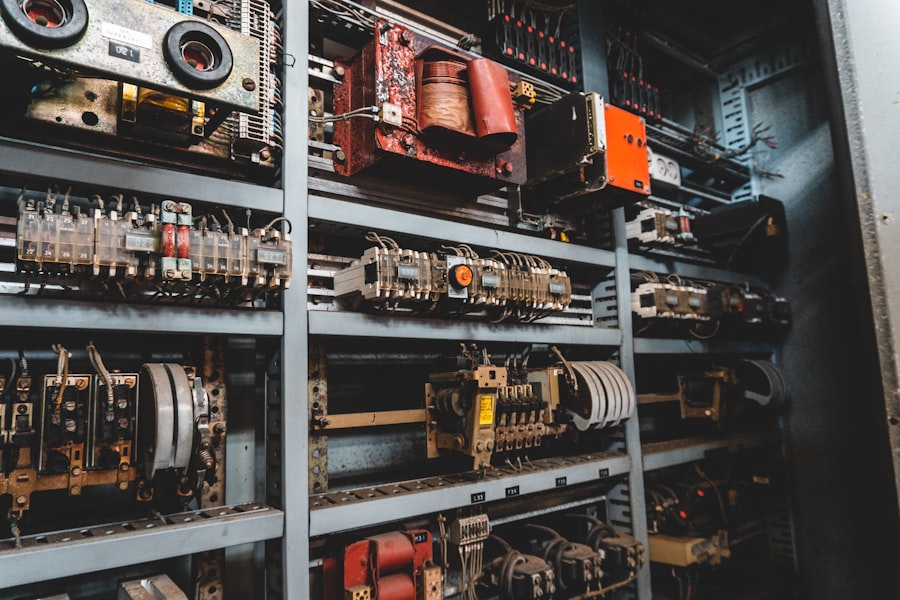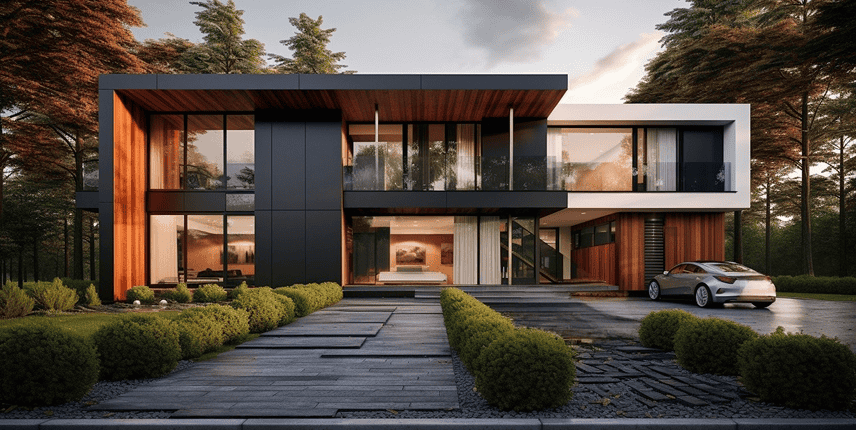An HVAC (Heating, Ventilation, and Air Conditioning) system is a complex network designed to regulate indoor climate, ensuring comfort throughout the year. At its core, an HVAC system comprises several components, including the furnace, air conditioner, ductwork, and ventilation systems. Each part plays a crucial role in maintaining a stable temperature and air quality within a building.
Understanding how these components interact can empower homeowners to make informed decisions regarding maintenance, upgrades, and energy efficiency. The furnace is responsible for heating the air during colder months, while the air conditioning unit cools the space in warmer weather. Ductwork serves as the pathway for conditioned air to travel throughout the home, and proper design and installation are essential for optimal performance.
Additionally, ventilation systems help to circulate fresh air and expel stale air, which is vital for maintaining indoor air quality. Familiarity with these components allows homeowners to identify potential issues early on and take proactive measures to ensure their HVAC system operates efficiently.
Key Takeaways
- Understanding your HVAC system helps optimize its performance and lifespan.
- Regular maintenance and cleaning prevent breakdowns and improve efficiency.
- Upgrading to energy-efficient equipment reduces energy costs and environmental impact.
- Using programmable thermostats allows precise temperature control and energy savings.
- Proper insulation, sealing, and natural ventilation enhance comfort and indoor air quality.
Regular Maintenance and Cleaning
Regular maintenance of an HVAC system is paramount for its longevity and efficiency. Routine inspections can help identify minor issues before they escalate into costly repairs. For instance, checking the air filters monthly and replacing them as needed can significantly improve airflow and reduce strain on the system.
Clogged filters can lead to reduced efficiency, increased energy consumption, and even system failure. Homeowners should also schedule professional inspections at least once a year to ensure that all components are functioning correctly. Cleaning is another critical aspect of HVAC maintenance.
Dust and debris can accumulate in various parts of the system, including the ducts, coils, and blower. This buildup not only hampers efficiency but can also lead to poor indoor air quality. A thorough cleaning of the ducts can remove allergens and pollutants, creating a healthier living environment.
Additionally, cleaning the evaporator and condenser coils can enhance the system’s ability to transfer heat, further improving energy efficiency. By committing to regular maintenance and cleaning, homeowners can extend the lifespan of their HVAC systems while enjoying lower energy bills.
Upgrading to Energy-Efficient Equipment

As technology advances, so do the options available for HVAC systems. Upgrading to energy-efficient equipment can yield significant benefits in terms of both performance and cost savings. Modern HVAC units are designed with advanced features that enhance their efficiency ratings, such as variable-speed motors and smart thermostats.
These innovations allow for more precise temperature control and reduced energy consumption compared to older models. For example, Energy Star-rated appliances are recognized for their superior energy efficiency. Replacing an outdated furnace or air conditioner with an Energy Star-certified model can lead to substantial savings on utility bills over time.
Additionally, many utility companies offer rebates or incentives for homeowners who invest in energy-efficient upgrades, making it a financially savvy decision as well. By embracing these advancements in technology, homeowners not only contribute to environmental sustainability but also enjoy enhanced comfort in their living spaces.
Using Programmable Thermostats
| Metric | Value | Unit | Notes |
|---|---|---|---|
| Average Energy Savings | 10-15 | % | Reduction in heating and cooling energy use |
| Typical Payback Period | 1-2 | Years | Time to recover installation cost through savings |
| Temperature Setback Range | 4-10 | °F | Recommended temperature difference during unoccupied periods |
| Programmable Periods per Day | 4 | Periods | Common number of daily programmable time slots |
| Installation Cost | 50-150 | Units | Typical cost range excluding professional installation |
| Average Lifespan | 10-15 | Years | Expected operational life of a programmable thermostat |
| Impact on HVAC System Wear | Reduced | N/A | Less frequent cycling can extend system life |
Programmable thermostats represent a significant leap forward in managing indoor climate control effectively. Unlike traditional thermostats that require manual adjustments, programmable models allow users to set specific heating and cooling schedules based on their daily routines. This feature ensures that energy is not wasted when the home is unoccupied or during sleeping hours when lower temperatures are often preferred.
For instance, a homeowner can program the thermostat to lower the temperature during the day when no one is home and gradually raise it before occupants return in the evening. This level of control not only enhances comfort but also leads to considerable energy savings. Some advanced models even offer Wi-Fi connectivity, enabling users to adjust settings remotely via smartphone apps.
This flexibility allows homeowners to respond to unexpected changes in their schedules without compromising energy efficiency.
Proper Insulation and Sealing
Proper insulation and sealing are critical components of an efficient HVAC system. Insulation helps maintain desired indoor temperatures by reducing heat transfer between the interior of a home and the outside environment. Inadequate insulation can lead to significant energy loss, forcing HVAC systems to work harder to maintain comfort levels.
Common areas where insulation is essential include attics, walls, floors, and basements. Sealing gaps and cracks around windows, doors, and other openings is equally important in preventing air leaks that can undermine HVAC efficiency. Weatherstripping and caulking are effective methods for sealing these leaks, ensuring that conditioned air remains inside while outdoor air is kept at bay.
By investing in proper insulation and sealing techniques, homeowners can create a more energy-efficient environment that reduces reliance on heating and cooling systems.
Utilizing Natural Ventilation

Natural ventilation is an often-overlooked strategy for enhancing indoor air quality while reducing reliance on mechanical systems. By strategically opening windows and doors, homeowners can take advantage of outdoor breezes to cool their homes naturally. This approach not only saves energy but also promotes a healthier living environment by allowing fresh air to circulate.
In climates where outdoor temperatures are mild, natural ventilation can be particularly effective. Homeowners can create cross-ventilation by opening windows on opposite sides of the house, allowing cooler air to flow in while warmer air escapes. Additionally, incorporating design elements such as vents or skylights can further enhance natural airflow throughout the home.
While natural ventilation may not replace HVAC systems entirely during extreme weather conditions, it serves as a valuable supplement that contributes to overall energy efficiency.
Managing Airflow and Air Quality
Effective management of airflow is essential for maintaining optimal indoor air quality and comfort levels within a home. Properly designed ductwork ensures that conditioned air is evenly distributed throughout all rooms, preventing hot or cold spots that can lead to discomfort. Homeowners should be mindful of furniture placement and other obstructions that may impede airflow from vents.
In addition to managing airflow, monitoring indoor air quality is crucial for health and well-being. Factors such as humidity levels, dust accumulation, and the presence of allergens can significantly impact air quality. Utilizing air purifiers or dehumidifiers can help mitigate these issues by filtering out pollutants or controlling moisture levels within the home.
Regularly checking and replacing air filters also plays a vital role in maintaining clean air circulation throughout the HVAC system.
Seeking Professional Advice and Assistance
While many aspects of HVAC maintenance and management can be handled by homeowners themselves, seeking professional advice is invaluable for more complex issues or upgrades. Certified HVAC technicians possess the expertise necessary to diagnose problems accurately and recommend appropriate solutions tailored to individual needs. Whether it involves routine maintenance or significant system upgrades, professionals can provide insights that may not be readily apparent to homeowners.
Additionally, professionals stay updated on industry trends and advancements in technology that can enhance system performance and efficiency. They can guide homeowners through the process of selecting energy-efficient equipment or implementing smart home technologies that integrate seamlessly with existing systems. By collaborating with experts in the field, homeowners can ensure that their HVAC systems operate at peak performance while maximizing comfort and minimizing energy costs.




